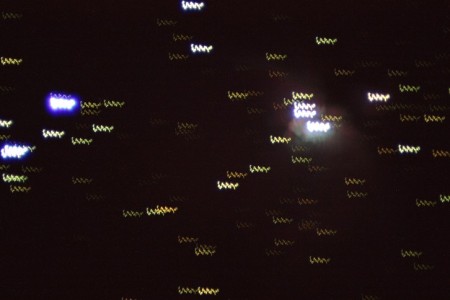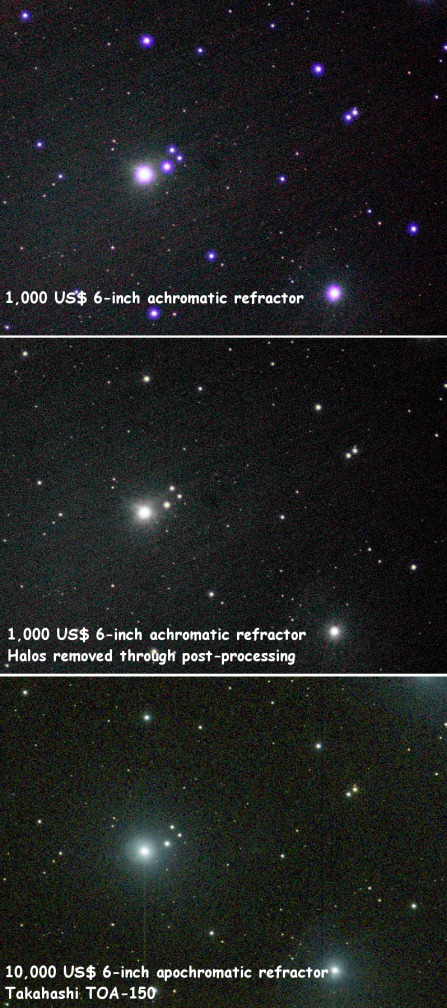I took a bunch of 30 seconds shots aiming M42 nebula as regular, in order to stack them later. Polar alignment was also regular, using EQ6 polar scope, probably not perfect.
I think M42 is a good target to measure periodic error in RA movement due to its near 0 degrees declination.
In order to show the drift, I stacked the shots without drift correction using a free software called startrails that gets the brightest pixels per shot, obtaining that way the best startrail you can achieve.
To measure the length of the drift, I requested a single shot solved plate from astrometry.net. They provide an exact width in arcminutes of the field. Then, I divide the width field by the width in pixels of my DSLR camera sensor, obtaining the resolution per pixel in arcseconds (a number close to 1 arcsecond/pixel for a 1,200 mm effective focal length telescope).
Then I measure the height of RA drift pattern with my regular post-processing free software, Fitswork4, and multiply that value by the previous resolution.
That is the way I have found that my EQ6 mount drifts around 40 arcseconds in RA movement. Dividing total exposure by the number of cycles (top peak to lower peak) I got the elapsed time needed to fulfill the periodic error: around 6 minutes long.


